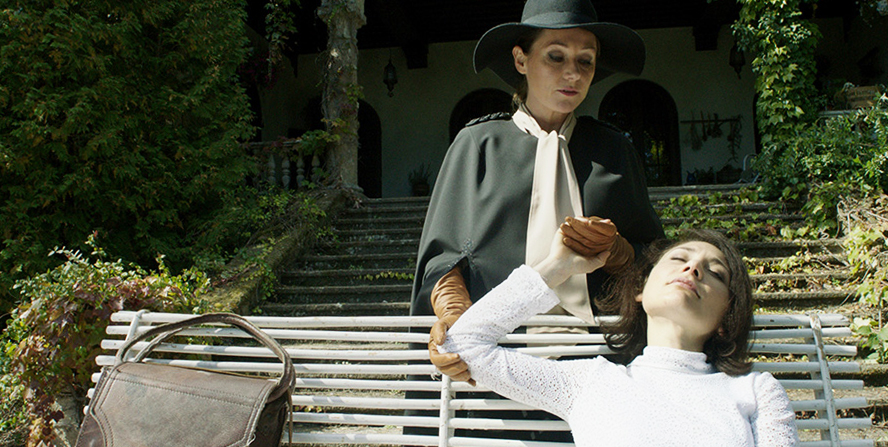Cross Cut: LGBT films from Europe, America differ in focus

“The Duke of Burgundy,” which releases this Friday at the Nuart Theater, is a prime example of European LGBT cinema conventions. This genre stands in stark contrast to American LGBT cinema. (Protagonist Pictures)
By Eileen Li
Jan. 22, 2015 12:22 a.m.
In film editing, crosscutting is the technique of cutting between actions occurring at the same time, but in different locations. In Los Angeles, the entertainment capital of the world, foreign cinema rarely takes the spotlight from the plethora of local releases. Columnist Eileen Li discovers foreign cinema screenings in the L.A. area each week, placing them in context of their native countries.
Lesbian, gay, bisexual and transgender films are raking in awards at film festivals and becoming art house favorites among cinephiles.
In recent years, most of the popular LGBT films have been products of either the United States or Europe. While both countries consistently produce films that have an LGBT-friendly attitude, these films tend to differ greatly in message.
American LGBT films contain a strong anti-discrimination message. European LGBT films, on the other hand, usually depict very personal love stories about individual characters who try to come to terms with and stay true to their identity, both sexual and otherwise.
The British art house drama, Peter Strickland’s “The Duke of Burgundy,” which opens Friday at the Nuart Theatre in Los Angeles, chronicles a sadomasochistic romance between an amateur lepidopterist – expert on moths and butterflies – and her younger, female housekeeper.
Alone in the butterfly expert’s house, the two go through several of the typical stages of any romance, from bold, passionate sexual exploration to the beginning of the end. A rift occurs when the lepidopterist grows tired of her lover’s complex systems of sexual gratification and lack of interest in an emotional relationship.
In “The Duke of Burgundy,” the main characters are both female not because the director wishes to argue for equality. Instead, they are a pair of lovers whose genders fit into the style of the film – Strickland takes advantage of femininity to produce a soft, sensual tone.
Fans of American LGBT cinema may find the film’s matter-of-fact treatment of LGBT relationships unusual. Among European work, however, the depiction of romance between LGBT characters is common.
Two similar European LGBT romances are “Weekend” and “Blue Is the Warmest Color,” both available on Netflix.
In the French film “Blue Is the Warmest Color,” which won the Palme d’Or at the 2013 Cannes Festival, romance unfolds in tandem with a young woman’s coming-of-age story. In the film, a high school girl, Adèle, realizes that her relationship with her boyfriend is not emotionally satisfying. When she meets an older, quirky blue-haired girl, she discovers genuine love. Like in “Weekend,” the storyline is motivated by the typical ups and downs of a love story.
Because Adèle’s process of coming out occurs relatively smoothly, there is little space in the film for an anti-discrimination message. Adèle also hints at being attracted to men later on in the film, showing that her emotions are less based on sexual orientation than on a connection with other individuals.
Fans of realistic LGBT film relationships such as these will have trouble finding them in American films. While some American LGBT films have also been memorable for their beautiful romances, most are celebrated for their poignant anti-discrimination messages instead.
This theme is central to films such as last year’s Oscar best picture nominee, “Dallas Buyers Club.” Set in 1985 Dallas, the film centers on a straight, enterprising hustler who is diagnosed with AIDS and finds a way to provide unapproved AIDS medication to both himself and other, mostly gay, patients with the disease. Based on the true story of Ron Woodroof (Matthew McConaughey), the film portrays its protagonist as a hero of sorts while much of the medical community is villainized.
Because it depicts a historical event in such a positive light, the film’s message resonates with the ongoing movement for gay rights in the U.S.
This theme is also apparent in tragedies such as Harvey Milk biopic “Milk” and Ang Lee’s classic, “Brokeback Mountain,” both of which depict gay men who are faced with discrimination in society.
The reason behind the different messages in American and European LGBT cinema may be because of the relative histories of LGBT rights in both locations. In America, gay relationships were first legalized in Illinois in 1958. In Europe, several countries had legalized gay relationships far before the 20th century. During the French Revolution, for example, LGBT relationships were legal in every country under French rule.
While their treatment of the modern LGBT topic varies significantly, both European and American LGBT films can help to cement attitudes of acceptance into society, beginning with filmgoers.


